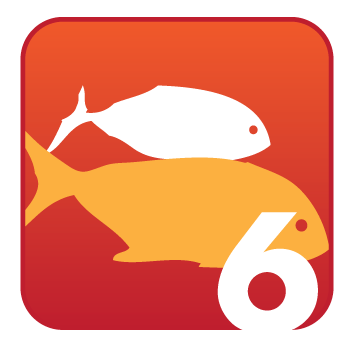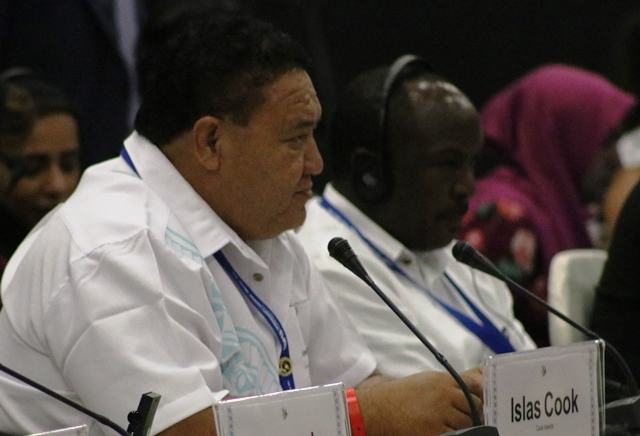
Biodiversity Conservation
8 December 2016, CBD COP13, Cancun Mexico - There are 20 Aichi Targets in all, endorsed at the tenth Conference of the Parties to the CBD in Nagoya, Japan in 2010. They help to meet five different strategic goals which aim to reduce the loss of biodiversity by the year 2020. Each day during the CBD COP13 we'll be sharing one of the Targets with you and examples of how the Pacific islands are meeting these. – #PacificProtectedAreas

Strategic Goal B: Reduce the direct pressures on biodiversity and promote sustainable use
Target 6: By 2020 all fish and invertebrate stocks and aquatic plants are managed and harvested sustainably, legally and applying ecosystem based approaches, so that overfishing is avoided, recovery plans and measures are in place for all depleted species, fisheries have no significant adverse impacts on threatened species and vulnerable ecosystems and the impacts of fisheries on stocks, species and ecosystems are within safe ecological limits.

"The Cook Islands has declared its 2.0 million square kilometre economic exclusive zone (EEZ) as a marine conservation areas a "Marae moana". Legislation is being drafted that will place marine biodiversity as a priority intervention and will create a high level advisory body that will provide policy guidance to all sectors involved in the fisheries in the Cook Islands.
The Cook Islands fisheries has its sector plan in place on aquaculture, inshore and offshore fisheries with a vision of working in partnership with communities, businesses and other agencies so that the people of the Cook Islands are receiving maximum long-term benefits from the sustainable development and utilisation of marine resources - throughout the nation.
Putting in place targeted local marine reserves. The Cook Islands has a network of locally designated marine reserves known as ra'ui that provide a refuge from non-discriminate forms of fishing such as gill nets or control the levels of harvesting. These ra'ui areas are managed by communities for communities for food security and also contributes to habitat protection and biodiversity conservation
Marine reserves have also been established under regulations to protect commercial opportunities. For example the Aitutaki bonefish sports fishery has designated areas where gill netting is banned to protect the adult bonefish that aggregate in these locations to breed." – Mr Mona Ioane, Associate Minister of Environment, Cook Islands during his presentation to the High Level Roundtable for the CBD COP13

Strategic Goal B: Reduce the direct pressures on biodiversity and promote sustainable use
Target 6: By 2020 all fish and invertebrate stocks and aquatic plants are managed and harvested sustainably, legally and applying ecosystem based approaches, so that overfishing is avoided, recovery plans and measures are in place for all depleted species, fisheries have no significant adverse impacts on threatened species and vulnerable ecosystems and the impacts of fisheries on stocks, species and ecosystems are within safe ecological limits.

"The Cook Islands has declared its 2.0 million square kilometre economic exclusive zone (EEZ) as a marine conservation areas a "Marae moana". Legislation is being drafted that will place marine biodiversity as a priority intervention and will create a high level advisory body that will provide policy guidance to all sectors involved in the fisheries in the Cook Islands.
The Cook Islands fisheries has its sector plan in place on aquaculture, inshore and offshore fisheries with a vision of working in partnership with communities, businesses and other agencies so that the people of the Cook Islands are receiving maximum long-term benefits from the sustainable development and utilisation of marine resources - throughout the nation.
Putting in place targeted local marine reserves. The Cook Islands has a network of locally designated marine reserves known as ra'ui that provide a refuge from non-discriminate forms of fishing such as gill nets or control the levels of harvesting. These ra'ui areas are managed by communities for communities for food security and also contributes to habitat protection and biodiversity conservation
Marine reserves have also been established under regulations to protect commercial opportunities. For example the Aitutaki bonefish sports fishery has designated areas where gill netting is banned to protect the adult bonefish that aggregate in these locations to breed." – Mr Mona Ioane, Associate Minister of Environment, Cook Islands during his presentation to the High Level Roundtable for the CBD COP13